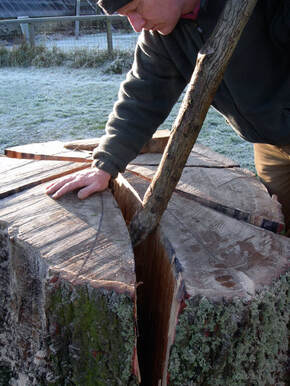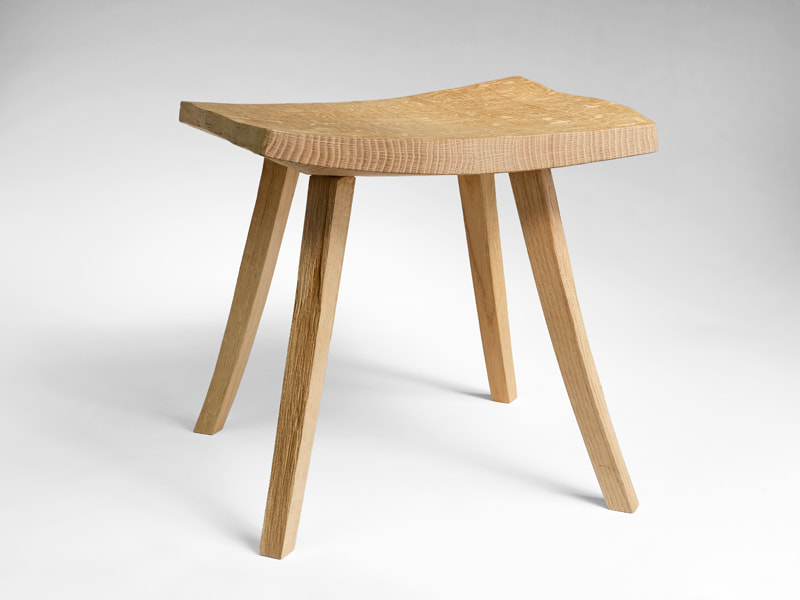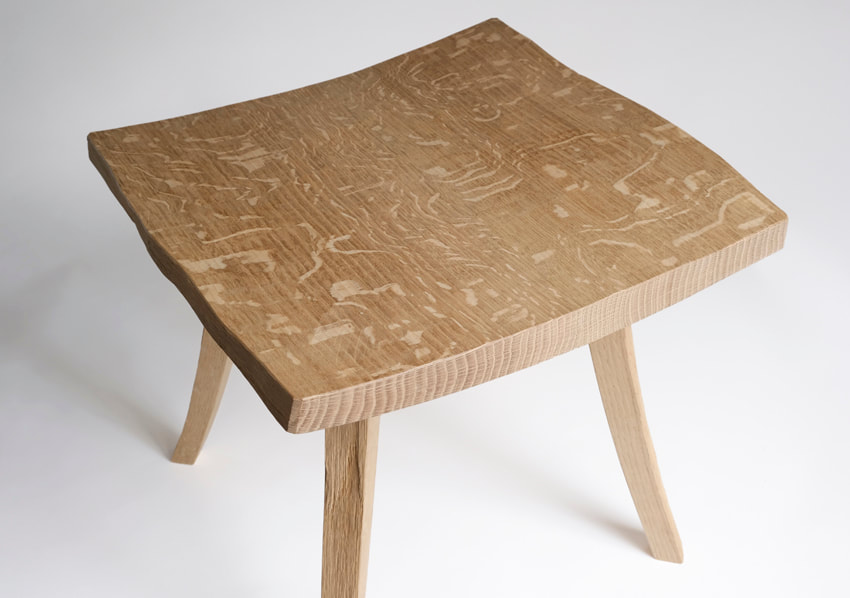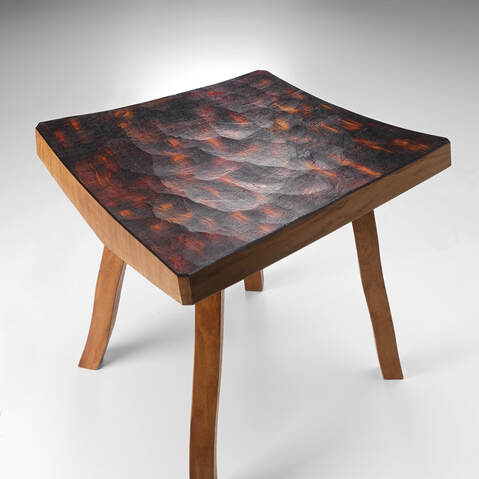low tables & stools benches boxes & chests chairs
I'm making both stools and low tables using similar material and techniques. The starting point is the riven oak log where 'wedge-like' sections are released by splitting. I use mainly local oak from large wind-blown or damaged trees.
Worked on individually, they're treated like sculptures in response to the infinite shapes and qualities of each piece of wood.
Some of these 2-piece low tables have a central joint where two thick edges meet. The meandering core of a tree is preserved to the outside edge on both sides. The inner soul of the tree becomes a defining feature. I can spend many days on the intricacies of these simple looking pieces ... making choices as they progress.
The colouring here is connected to the tool type used (such as the adze) or influenced by the wood characteristics such as containing tannin or enhancing the pattern of medullary rays with bright patches. In this way the colour is part of the making process rather than arbitrarily painted on.
Stools were once my default choice of cleft item to experiment upon. Pieces are smaller and construction simplest, with always the gentle curves if natural split lines are followed. The riven wedge-section creates a natural front and back edge with a ready-made tilt for good posture . A simple oak stool was my first cleft product sold in 1992.



